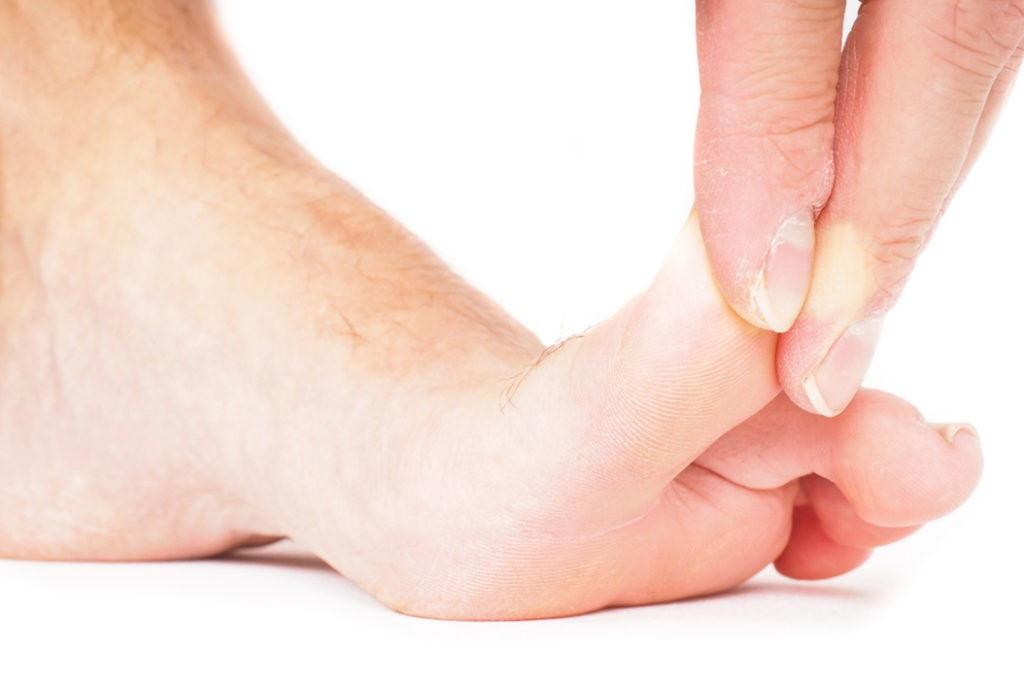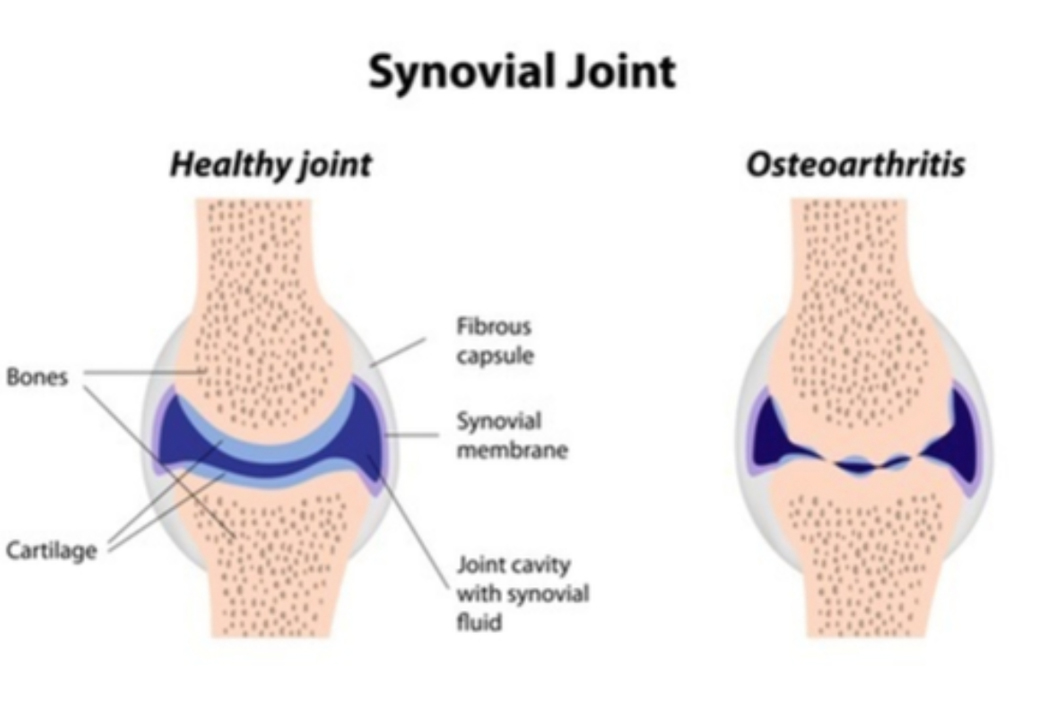What is osteoarthritis of the big toe?
Osteoarthritis of the big toe is a degenerative joint condition which slowly progresses with age. Osteoarthritis of the big toe affects both males and females equally, however most patients suffering from this condition are over 50 years old. Osteoarthritis of the big toe can occur for many reasons including overuse e.g. distance runners, secondary to trauma e.g. breaking your big toe or sustained pressure through the big toe during your working day e.g. such as wearing high heels.
When the joint surfaces are placed under increased stress, it can result in damage to the articular cartilage (which lines the ends of the bones). Damage to this protective layer causes it to become progressively thinner over time. At a more advanced stage the joint becomes inflamed, this is known as synovitis. The result of this process is pain and stiffness in the toe.
What are the symptoms of osteoarthritis of the big toe?
Symptoms of big toe osteoarthritis can include:
- A deep, dull ache in the big toe joint. This can also be sudden and sharp on occasion.
- Stiffness, especially when moving after prolonged periods of rest such as sleeping.
- Big toe swelling.
- Your big toe may also look bigger on the painful side than on the other side.
What other conditions can present like osteoarthritis of the big toe?
Osteoarthritis of the big toe vs gout
Osteoarthritis (OA) of the big toe which is a progressive joint condition marked with regular episodes of pain and stiffness. Whereas, an episode of gout can occur very quickly and arrive unexpectedly. Both osteoarthritis (OA) of the big toe and gout cause the big toe to become painful and stiff. However, gout is also associated with redness and heat.
Gout is an incredibly painful condition commonly affecting the big toe. It is caused by elevated levels of uric acid in the blood stream (known as hyperuricemia). When hyperuricemia is present small crystal deposits are laid down inside the joint. Movement and touch are exquisitely painful and therefore walking becomes very difficult. Gout is most commonly seen in men, patients with kidney failure, obesity and is also associated with a rich diet (red meat and alcohol are common causes of this condition). It can occur at any age but is more regularly seen in older patients.
What is osteoarthritis?
Osteoarthritis is a progressive, degenerative process that occurs within a joint and can be secondary to overuse. The exact cause is often unknown. This condition is sometimes described as ‘wear and tear’ in the joint. It is a very common musculoskeletal pathology with over 303 million people suffering worldwide during 2017 (Kloppenburg et el, 2019). Osteoarthritis regularly affects the hips, knees and big toe. Although osteoarthritis is more common in older people, osteoarthritis of the big toe does also occur in younger people as well. It can be a very uncomfortable and debilitating condition.
Osteoarthritis pain can be associated with poor foot and lower limb biomechanics as well as muscle weakness and tightness. For example, we often find people with painful big toes have tight calves. This can place excessive pressure on the big toe when you walk.
How do I know if I have an arthritic big toe joint?
Osteoarthritis in the big toe usually builds up slowly over a long period of time (several months). On occasion, the pain can come on suddenly if you ‘stub’ your toe or drop something on it. It is not uncommon that the pain fluctuates somewhat.
It is not always clear why a joint suddenly becomes painful but it can be associated with a sudden increase in activity such as hill walking, starting a new exercise/sport or wearing new shoes (particularly high heels). These flare-ups do normally settle by themselves if you rest from the aggravating activity for a few weeks and wear sensible lace-up shoes or supportive trainers. If it lasts for several months we would suggest you seek further help.
An inflamed osteoarthritic big toe will be painful if you touch it, move it up and down and will often appear swollen or ‘puffy’. It can also be stiffer than the other side and you may also notice a change in the shape of the joint.
When you have a painful swollen joint, this is because the joint becomes inflamed. This is known as a joint ‘synovitis’. A synovitic joint can be very uncomfortable and painful when you walk and can result in a limp. We also see it in runners particularly those running long distances.
Research suggests that maintaining good flexibility and strength around the joint will help to slow disease progression however this does not give you a new joint (Hunter et al, 2009).
How is osteoarthritis of the big toe diagnosed?
Your physiotherapist will carry out a full clinical assessment of the specific joint and the surrounding joint and muscles. This will include an assessment of the joint range of movement, muscle strength and muscle length, as well as the presence of any joint deformity, swelling or redness.
An x-ray is often required. An X-ray will assess the bones, the joint surfaces and the joint space. This can be useful to grade the severity of the osteoarthritis. This can be organised by your GP. You may also require blood tests. This is to rule out a differential diagnosis of rheumatoid arthritis, Gout or other systemic rheumatological diseases. It is crucial that a correct diagnosis is made to ensure you get the most effective treatment. Your physiotherapist will let you know if you need any of these tests.
Using ultrasound guidance for the diagnosis of osteoarthritis
At Complete we have a highly experienced team of physiotherapists who are also qualified in the use of diagnostic ultrasound. Ultrasound imaging is used to assess for inflammation and signs of osteoarthritis. Research has shown that ultrasound imaging is highly sensitive at picking up early joint changes associated with arthritic joint pain (Wakefield et al, 2000. Gurjit et al, 2020). Diagnostic ultrasound is also very sensitive at assessing a joint for Gout, a relatively common reason for big toe joint pain.
How do we treat osteoarthritis in the big toe?

It is important to try and understand why the joint has become arthritic. At Complete a full assessment of your hips, knees and feet is undertaken to identify any contributing factors. Your clinician may also prescribe manual therapy techniques such as joint mobilisations, soft tissue techniques and acupuncture to help increase movement and reduce pain at your big toe. You will also be prescribed a bespoke set of exercises.
Here are a few top tips you may also like to try:
- Resting from aggravating symptoms e.g. reduce your running or stop wearing high heels
- Try applying a small bag of peas, wrapped in a tea towel, placed over the joint for 10 minutes to reduce pain and inflammation (be careful not to cause an ice burn)
- Stretch your big toe unless it is too painful
- Calf raising strengthening exercises – unless it aggravates your pain
- Try using an off-the-shelf inner sole for your shoe (known as an orthotic)
- Try using a topical anti-inflammatory such as Voltarol gel but speak to a pharmacist first
What if conservative treatment does not work?
If conservative options have been unsuccessful there are a few other treatment modalities available to you that can be very successful at reducing pain and improving function.
Ultrasound-Guided Injections
If pain is persistent and not settling down then a steroid injection may be required. A mixture of local anaesthetic and corticosteroid (a potent anti-inflammatory) is injected using ultrasound guidance. This is to ensure the joint is accurately targeted. Research has shown that guided injections are more accurate and are more effective at reducing pain than non-guided injections.
Hyaluronic Acid is a naturally occurring substance within the body. There is a growing body of evidence suggesting its efficacy in treating chronic musculoskeletal joint pathology such as osteoarthritis. This can be injected using local anaesthetic.
A referral to a podiatrist for a personalised orthotic (specialised inner sole for your footwear) may also be recommended to offload the painful area to allow the joint time to settle down. In some cases, we will refer you to an orthopaedic consultant for further imaging such as an MRI and/or X-ray and the opportunity to discuss surgical opinions.
Complete has a team of highly experienced physiotherapists who are fully qualified to carry out diagnostic ultrasound scans and ultrasound-guided injections. For further information please contact us on 0207 4823875 or email injections@complete-physio.co.uk.



Leave A Comment